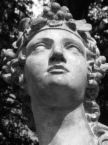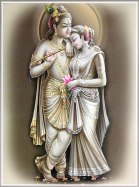The fifth pagan deity that Zeitgeist points out as a god much like Jesus was a very interesting one to look into, mostly because I ran into a brick wall while researching him. Unlike Horus, Dionysus, or even Krishna, there isn’t much information about Mithras. What information we do have about him is very imperfect and is based largely on educated guess work rather than on hard fact. However, it is not uncommon to find claims made about him on unreliable, unacademic conspiracy websites.
As for the claims made by Peter Joseph in Zeitgeist are,
Mithra, of Persia, born of a virgin on December 25th, he had 12 disciples and performed miracles, and upon his death was buried for 3 days and thus resurrected, he was also referred to as “The Truth,” “The Light,” and many others. Interestingly, the sacred day of worship of Mithra was Sunday.
Mithraism began to be practiced by Romans in the late first century A.D., but it didn’t enjoy widespread membership until the mid-second century A.D. — On the internet, I ran across claims about the existence of “mithraic scriptures,” but, in reality, there are no such known writtings. Being a “mystery religion,” there are no sacred writings of the cult like there are in other ancient religions such as Christianity, Hunduism and Buddhism. It is also doubtful that any such sacred texts ever existed.
 There exists the popular misconception that Christianity and Mithraism were in bitter competition for the heat and soul of the Roman empire. — This is not true! The truth is that the Roman cult of Mithraism only allowed men to join while excluding women. Christianity, being much more open to membership, was therefore at an advantage. Also, despite the fact that several Roman emperors were initiates in the cult of Mithras it was never instated as the official Roman religion.
There exists the popular misconception that Christianity and Mithraism were in bitter competition for the heat and soul of the Roman empire. — This is not true! The truth is that the Roman cult of Mithraism only allowed men to join while excluding women. Christianity, being much more open to membership, was therefore at an advantage. Also, despite the fact that several Roman emperors were initiates in the cult of Mithras it was never instated as the official Roman religion.
The claim that Mithras was born on December 25th seems to be relevant, however as pointed out in previous posts, this date has no relevance to the origins of Christianity since it was in the forth century in which it was instituted. The claim that he was born of a virgin is false since he was born by being forced out of a rock. I guess someone could make the argument that a rock is a virgin, but to argue that is relevant is absurd. As for claims that Mithras performed miracles, this is too generic to be of any relevance since miracles are to be expected in theistic and polytheistic religion. — There is no reference I could find that shows him having twelve disciples. It’s important to consider that Mithras didn’t travel, so he would have had no traveling companions.
Zeitgeist’s claim that Mithras was dead for three days and then resurrected is demonstrably false. Mithras did not die, and therefore was not resurrected. He simply ascended to heaven in the Sun’s chariot after killing the bull. When in heaven, he has a meal with the Sun in which they eat the meat of the bull that he killed. — Since he was said to have killed the bull right before he ascended to heaven, there is therefore no time for him to have died and resurrected.
On the surface, the mithraic holy day being Sunday would seem relevant, but that goes without taking into account that Jesus and the first Christians were, in facts, Jews meaning they celebrated the Sabbath on Saturday rather than Sunday. To make matters worse, we really don’t know on what days Mithraic rituals took place, so this partucular claim really should not be made, despite its constant repetition. — Also, having been raised as a Seventh-Day Adventist, this objection is even less affective on me than on most other Christians.
In summary, the alleged similarities between Jesus and Mithras as mentioned by Zeitgeist are mostly false. But even if the parallels were real, they would still be fail to demonstrate causation . . . due to to the time when Mithraism appears in the Roman empire. The Encyclopedia Britannica says,
There is little notice of the Persian god in the Roman world until the beginning of the 2nd century, but, from the year AD 136 onward, there are hundreds of dedicatory inscriptions to Mithra. This renewal of interest is not easily explained. The most plausible hypothesis seems to be that Roman Mithraism was practically a new creation, wrought by a religious genius who may have lived as late as c. AD 100 and who gave the old traditional Persian ceremonies a new Platonic interpretation that enabled Mithraism to become acceptable to the Roman world.
And as a final word, it has been suggested from this that rather than Christianity borrowing from Mithraism, the borrowing may have been the reverse. However, others suppose that neither religion borrowed from the other, prefering the possibility that the similarities that do exist between Christianity and Mithraism may be explained as having their origins in the Greco-Oriental mindset of the time. Either hypothesis is prefered, Zeitgeist’s implication that Jesus was an imitation of Mithras is less supported then it supposes. One pagan researcher (not a Christian apologist) I’ve read on this subject concludes, “Did Christianity steal from Mithraism? Most definitely not.”
References:
The Catholic Encyclopedia Mithraism.
Mithraism
Mithra & Mithraism: The Legend of Mithras
What Mithraism Isn’t
Encyclopedia Britannica, Mithraism.
The Cult of Mithras. UNRV History.
Further Reading:
Epologetics: Debunking the Jesus-Mithra Myth
Was the story of Jesus stolen from that of the Persian deity Mithra?, by J.P. Holding
Mithras: Mithraism and Christianity from SkepticWiki









